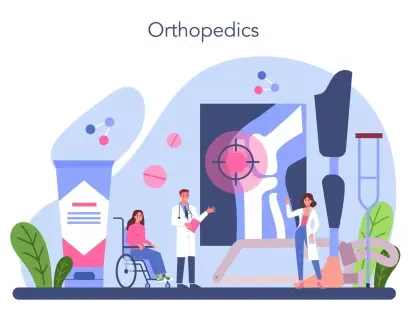Overview of Digital Healthcare Transformation
The digital healthcare sector is experiencing unprecedented growth, with global spending on health technology projected to surpass $500 billion annually, reflecting a profound shift in how medical services are delivered. This surge positions technology as a cornerstone of modern medicine, especially as populations age and chronic conditions rise, intensifying the demand for accessible, efficient, and personalized care. Digital solutions are now critical tools for addressing these pressing challenges.
Key players such as Hims & Hers Health, Inc. (HIMS), Doximity, Inc. (DOCS), and American Well Corporation (AMWL) are driving this transformation by leveraging advanced systems to redefine patient-provider interactions. These companies are not merely adapting to change but actively shaping the future of healthcare delivery through innovative platforms that prioritize scalability and user experience. Their efforts are setting new benchmarks for what patients and providers can expect from medical services.
At the heart of this revolution lie artificial intelligence (AI), robust data infrastructure, and a focus on personalized care. These elements enable real-time insights, improve diagnostic accuracy, and enhance accessibility, ultimately leading to better patient outcomes. The integration of such technologies is streamlining operations and reducing costs, making healthcare more equitable across diverse demographics.
AI and Personalization in Patient Care
Emerging Trends in Healthcare Technology
AI-driven personalization stands as a defining trend in the healthcare industry, allowing for treatments tailored to individual needs through sophisticated algorithms. Real-time analytics further enhance this by providing immediate data to guide clinical decisions, while hybrid care models combine virtual and in-person interactions for comprehensive service delivery. These advancements are reshaping how care is conceptualized and administered.
Hims & Hers employs a proprietary technology stack that integrates electronic medical records and provider algorithms to create customized treatment plans. Similarly, Doximity’s AI Scribe automates documentation while maintaining compliance with privacy standards, and Amwell’s Converge platform optimizes workflows for large health systems. These tools reflect a broader movement toward precision and efficiency in medical practice.
Consumer expectations are evolving alongside these innovations, with patients increasingly seeking tailored solutions that address their unique health profiles. Data plays a pivotal role in meeting these demands, enabling providers to refine care with greater accuracy. Market drivers such as automation, intelligent diagnostics, and the ability to scale operations are creating fertile ground for growth and new opportunities in this dynamic sector.
Financial Performance and Growth Projections
From a market perspective, Hims & Hers demonstrates exceptional momentum with a year-to-date stock gain of 104.1%, significantly outpacing the industry average growth of 28.2%. This performance underscores investor confidence in the company’s strategic direction and its ability to capitalize on emerging trends. However, its forward price-to-sales ratio of 4.1X remains below the industry average of 5.9X, suggesting a nuanced valuation landscape.
Earnings projections for Hims & Hers indicate a robust increase of 118.5% in earnings per share from the current year to the next, highlighting strong financial health. Despite this, the company holds a Zacks Rank #3 (Hold), reflecting a balanced outlook for potential investors. Such metrics point to a cautious yet optimistic view of its market position over the coming quarters.
Looking ahead, the role of AI investments is poised to fuel long-term expansion within the sector. The potential for market growth remains substantial as companies like Hims & Hers continue to innovate and refine their offerings. This forward-looking perspective emphasizes the importance of sustained technological development in maintaining competitive advantage and meeting escalating demand.
Barriers to AI Adoption in Healthcare
The integration of AI into healthcare systems is not without significant hurdles, including the complexity of merging new technologies with existing frameworks. Data privacy concerns also loom large, as sensitive patient information must be safeguarded against breaches. Additionally, scalability poses a challenge, as solutions must be adaptable to varying healthcare environments without compromising quality.
Market dynamics further complicate adoption, with the need to balance the cost of innovation against affordability for end users. Maintaining human empathy in tech-enabled care remains a critical issue, as over-reliance on automation risks diminishing the personal connection central to medicine. These challenges require careful navigation to ensure that advancements do not come at the expense of patient trust.
Potential solutions include substantial investments in data infrastructure to support seamless integration and robust security measures. Strategic leadership, such as the appointment of Mo Elshenawy as CTO at Hims & Hers, can drive focused innovation. Adaptive strategies that prioritize both technological progress and patient-centric values are essential for overcoming these barriers and fostering widespread acceptance of AI-driven models.
Regulatory Environment and Compliance Challenges
The regulatory landscape for digital health is intricate, with frameworks like HIPAA setting stringent standards for data security and patient privacy. Compliance with these regulations is non-negotiable for companies operating in this space, as violations can lead to severe penalties and loss of credibility. Navigating these requirements shapes how technology is developed and deployed in healthcare settings.
These regulations impact innovation by imposing constraints on how quickly new solutions can be brought to market. For companies like Amwell, which supports critical systems such as the U.S. Military Health System, meeting rigorous compliance demands adds layers of complexity to their operations. Balancing regulatory adherence with the drive for advancement remains a persistent tension in the industry.
Evolving policies will continue to influence the trajectory of AI-driven healthcare, playing a key role in building trust in digital platforms. As guidelines adapt to technological progress, they must address emerging risks while fostering an environment conducive to innovation. This delicate balance is vital for ensuring that digital health solutions remain both effective and ethically sound.
Vision for Personalized Healthcare
The future of healthcare is set to be defined by deeper integration of AI applications and machine learning advancements that push the boundaries of diagnostic and therapeutic precision. Consumer wellness trends are also gaining traction, with a growing emphasis on proactive health management. These developments signal a shift toward more holistic and individualized care approaches.
Potential disruptors, such as global data integration, promise to enhance collaboration across borders, while the expansion of hybrid care models aims to serve diverse populations effectively. These innovations could redefine accessibility, making high-quality care available to underserved regions. The scalability of such initiatives will be crucial for their long-term success.
Specific growth areas, such as Hims & Hers’ oral testosterone and menopause programs, exemplify targeted innovation that addresses niche health needs with precision. Economic conditions, regulatory shifts, and technological breakthroughs will undoubtedly shape this landscape, influencing how quickly and effectively new solutions are adopted. The interplay of these factors will determine the pace of progress in personalized healthcare.
Reflecting on Industry Insights
Looking back, the transformative impact of AI and data analytics on healthcare was evident through the pioneering efforts of Hims & Hers, Doximity, and Amwell. Their commitment to merging technology with clinical expertise has laid a strong foundation for intelligent, adaptive care models. This era marked a significant pivot toward precision and accessibility in medicine.
For the path ahead, stakeholders should prioritize sustained investment in innovation to keep pace with rapid advancements. Strengthening compliance frameworks will be essential to maintain trust and safeguard patient data. Building partnerships that emphasize patient trust and human-centric care can further ensure that technology enhances rather than replaces the personal touch in healthcare delivery.









